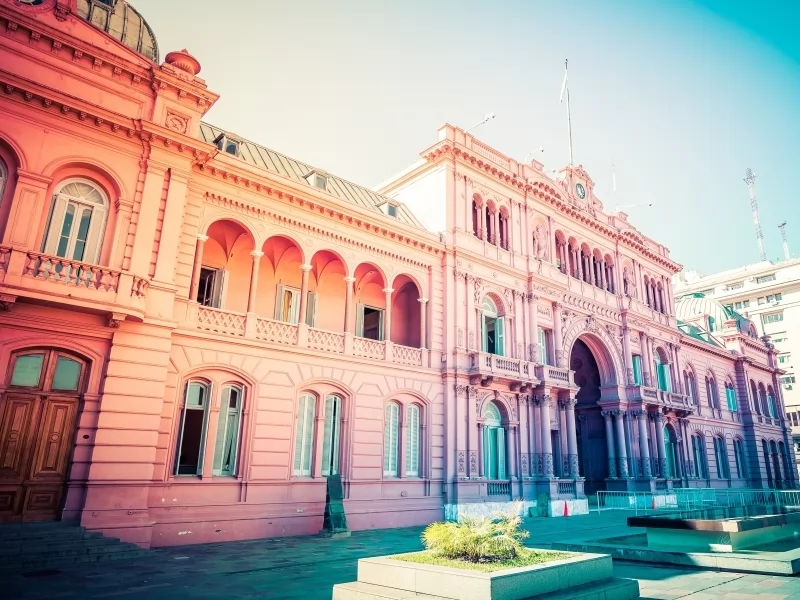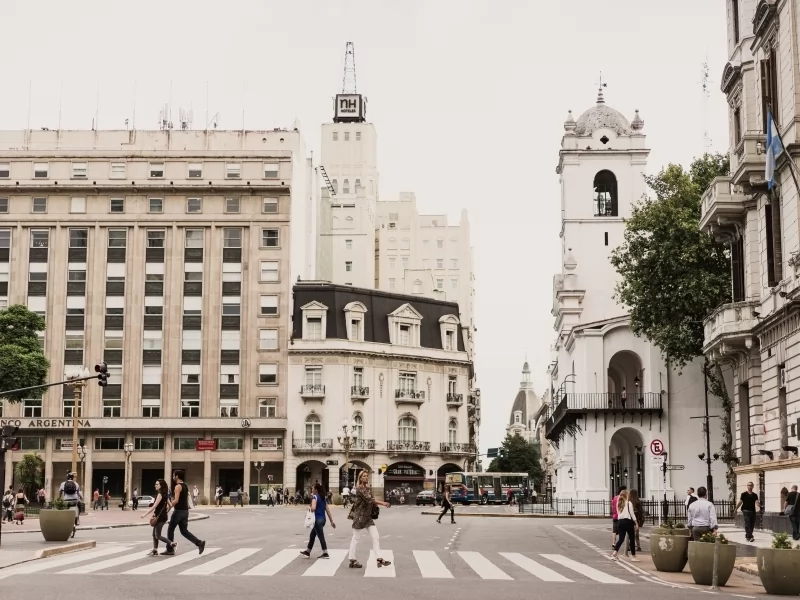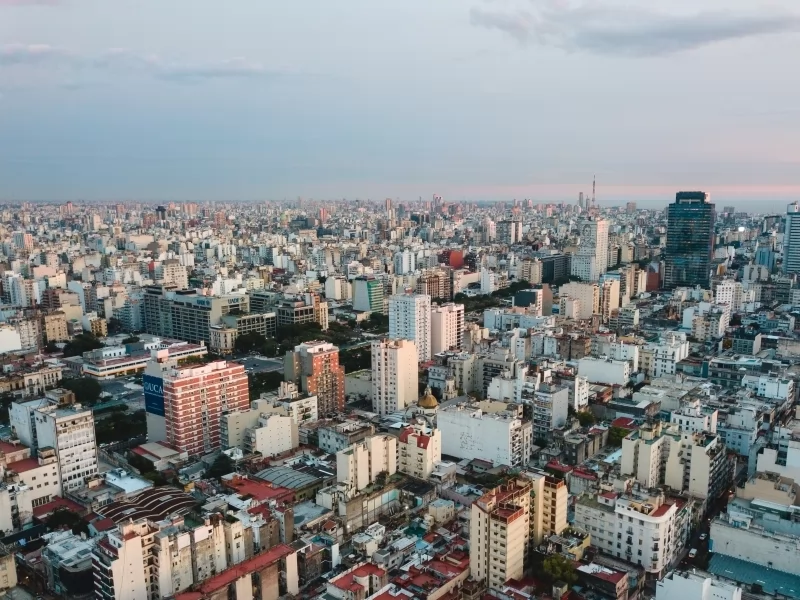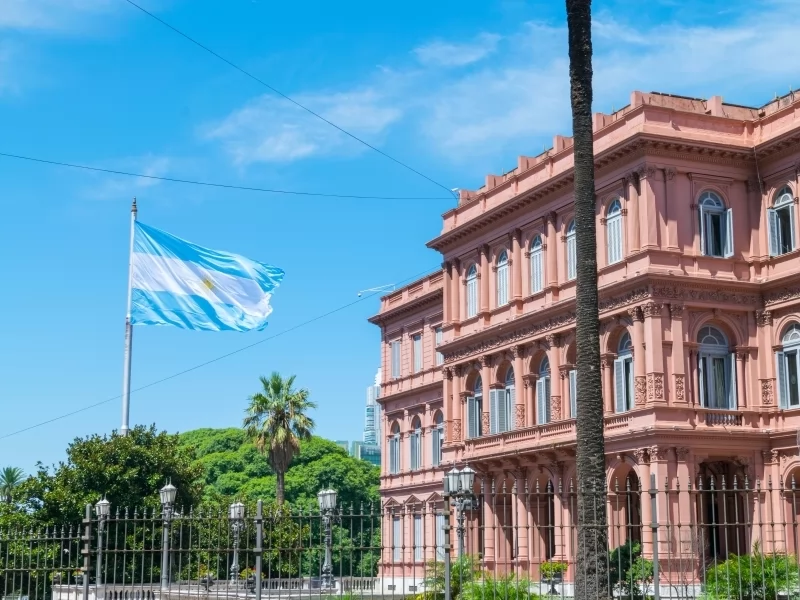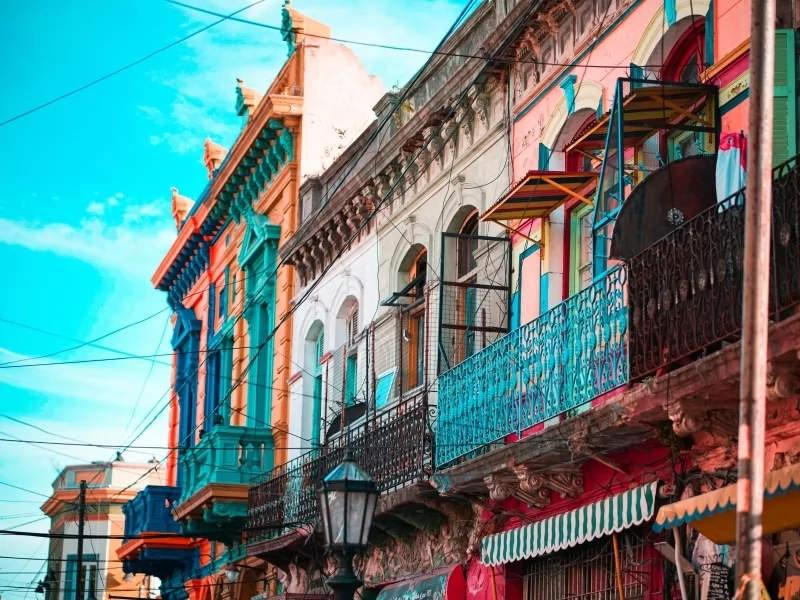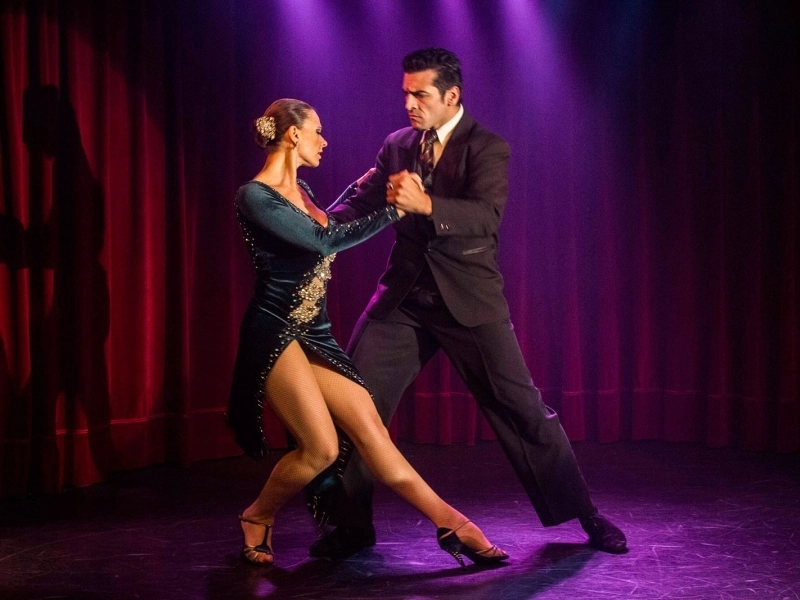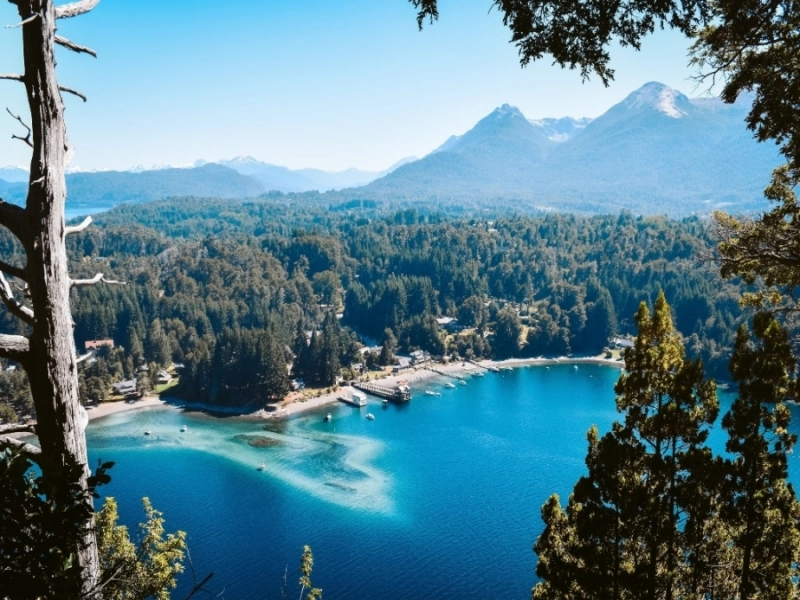News and Testimonials
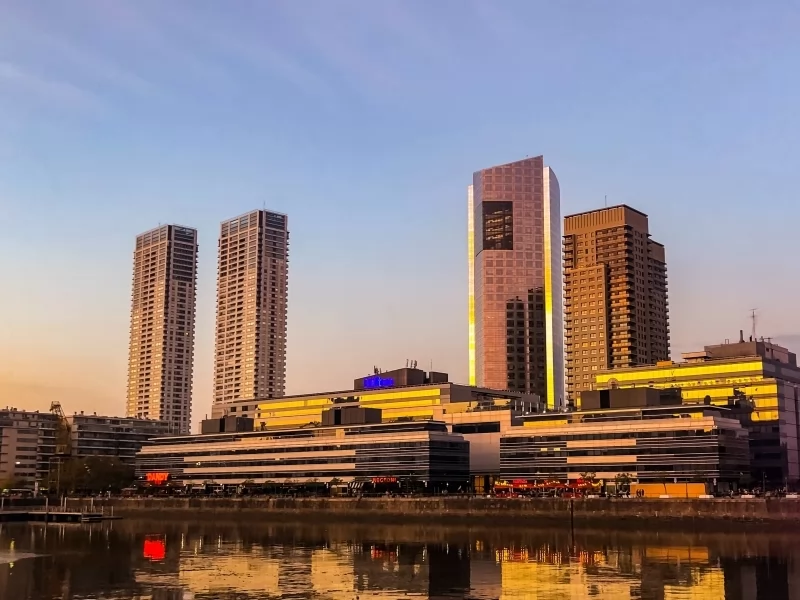
A city guide to Buenos Aires, Argentina's inventive capital
Famed for its boulevards and ballrooms, the Argentine capital is reinventing itself through restaurant collaborations, a new arts district, and a revamped dockland park.
Think Buenos Aires and the European associations are inevitable. Its reputation as the ‘Paris of South America’ has its roots in the late 1800s when the ideal of modernity among well-heeled Porteños (as Buenos Aires’ citizens are known) was modelled on France. From fashion to ornate facades, the capital of the fledgling independent Argentina — and its growing population of European émigrés — fostered a Parisian vogue that reached fever pitch in the early 20th century, when it welcomed a who’s who of avant-garde creatives, from Marcel Duchamp to Le Corbusier.
But to declare the city’s heyday long past, its glamour faded, its Camelot fallen, or to dwell too heavily on its history — Argentina’s string of coup d’états and dictatorships between 1930 and 1983 — is to misunderstand the dynamism and daring spirit woven into the fabric of modern-day Buenos Aires. This is a city whose track record proves that periods of adversity only pave the way for sparkling reinvention.
Testament to this are the innovations that have taken place within the city’s culinary scene in the past year — pivots and new enterprises that nimbly responded to the devastating rhythms of the pandemic like tango dancers in the city’s (presently shuttered) milonga ballrooms. While artisanal coffee shops switched to selling cups-to-go via hatches, elsewhere, collaborative culinary initiatives like F5 appeared. By day, a breezy bakery and brunch spot in the heart of the city, run by baker Francisco Seubert, at night, the venue passes into the hands of Rodrigo Sieiro and Tomás Romero, who serve up modern iterations of traditional cantina food. Local gourmands also benefitted when lauded experimental restaurant Anchoita decided during lockdown to reopen as a pop-up ice cream parlour. When life gives you lemons? In this case, Porteños made fresh and fruity gelato.
Even outside of the pandemic, the best way to connect with the city is by foot — ideally with a local guide. Enjoy stately Avenida del Libertador and Avenida Figueroa Alcorta, laden with purple jacaranda blossom. Linger awhile in the buzzy meeting spots of Plaza Mafalda and Barrancas de Belgrano; explore the revamped dockside nature reserve of Puerto Madero; soak up the sun in Parque Las Heras. Be intrepid — lesser-visited neighbourhoods like Caballito, Almagro, Boedo and San Cristóbal are home to a treasure trove of timeless vignettes. On weekend afternoons, when the lull of the siesta is palpable and the light begins to soften, join the old-timer clientele at retro corner bars and see neighbours chatting on their doorsteps over mate tea. Buenos Aires’ glory days are far from over.
Eight things to do in Buenos Aires
1. Xul Solar Museum: Built in 1993 to celebrate Argentinian artist Xul Solar, this museum contains his former apartment and library of 3,500 books. The building’s brutalist design and labyrinthine layout were inspired by his mystical works, which included made-up languages, tarot decks and experimental instruments, and are fascinating to explore.
2. Martín García Island: A visit to this nature reserve takes in the scenic Tigre Delta en route, reached via a two-and-a-quarter-hour catamaran service from the Estación Fluvial river port in Tigre. While here, visit the traditional bakery, famous for its pan dulce (a panettone-style cake of Italian origin) and walk around the ruins of the prison where former Argentine president Juan Perón was held in 1945. Sturla Viajes offers guided day trips to the island. To stay longer, book into the island’s campsite or simple hostel.
3. Confitería del Molino: One of the city’s finest examples of art nouveau architecture, dating back to 1916, the Confitería del Molino coffeehouse has been painstakingly restored over the past three years. Its emblematic cafe, with grand, stained-glass windows and marble pillars, is set to reopen in 2022.
4. Belgrano R English Quarter: Buenos Aires’ English Quarter, Belgrano R, is characterised by late-19th-century mansions and cobbled streets, making it ideal for a leisurely stroll. Originally inhabited by British nationals working in railroad construction, it’s now an upscale residential area peppered with embassies. Avenida Melián, with its canopy of tipa trees and dappled sunlight, easily wins the prize for the city’s most photogenic street.
5. Villa Crespo art district: When hallowed gallery Ruth Benzacar made the bold move to leave the established downtown arts district for a converted warehouse in Villa Crespo in 2014, other galleries soon followed suit. Nora Fisch, La Ira de Dios, Gachi Prieto, Hache and Pabellón 4 are some of the key spaces to visit in the now-vibrant, post-industrial neighbourhood. Watch out for the next instalment of Gallery Days, an afternoon of tours, open studios and performances.
6. San Martín Cultural Centre: Extensively restored in 2017, this modernist architectural gem, designed by Mario Roberto Álvarez in 1960, spans 13 floors, offering multipurpose auditoriums with exceptional acoustics, an arthouse cinema and a gallery with free exhibitions of exceptional Argentinian photography. A rich programme of ballet, opera, theatre and music concerts runs all year.
7. La República de Los Niños: This 130-acre children’s theme park was dreamt up by the Eva Perón Foundation and inaugurated in 1951. It’s thought to have provided the inspiration for Disneyland; allegedly, Walt Disney noted the chocolate-box houses and turreted buildings at its initial opening, although it’s more likely he saw the plans during a visit in the 1940s. The ‘Children’s Republic’ is essentially a rainbow-coloured model city, featuring a child-friendly parliament, courthouse, church, theatre, restaurants and even an airport.
8. Parque Centenario: Built in 1910 to celebrate the centenary of the revolution that kick-started Argentina’s War of Independence, this landscaped pleasure ground is an amuse-bouche of Porteño life, best experienced on weekends when you can peruse the secondhand book stalls and bustling flea market. Located on the perimeter, the ornate edifice of the Bernardino Rivadavia Museum of Natural Science houses astonishing regional dinosaur finds, while architecture buffs will appreciate the brutalist Naval Hospital, designed to resemble a ship.
Where to go shopping
Concepción: The brainchild of Ries, one of the country’s most exciting furniture studios, this edgy design space set in a former depot opened its doors in July in the heart of the arty Villa Crespo district. Conceived, renovated and launched during the pandemic, it now showcases the work of a host of local designers, including Luna Oks, whose sumptuous fabrics can be bought by the metre. Visits should be booked via Instagram.
Sombreros Maidana: This fourth-generation hat shop was founded by Luis Maidana 111 years ago. Heaven for any headwear aficionado, the shop is trusted by both estancieros and gauchos (rural Argentine landowners and cowboys, respectively). Sombreros Maidana is the only hat-maker in Argentina to still employ the traditional Borsalino method, an artisanal technique using steam to fashion the hats from hare fur, a process that happens at the rear of the store.
Quorum: Founded by a collective of Argentinian artists with the aim of giving young creatives a platform to display and sell their work, this art and design store has amassed an eclectic and inspirational roster of suppliers working in mixed media. Pick up an affordable print or more sizeable one-off pieces.
How to explore the city like a local
Mingle with tango crooners: Pull up a pew at El Boliche de Roberto, a legendary haunt steeped in tango heritage. The dusty bottles behind the bar are testament to the establishment’s vintage: the venue dates back to 1893, when it was a watering hole for horse traders. Order a fernet (a bitter, aromatic local spirit, often served with cola) and wait for the musicians to strike up. Expect impromptu renditions of tango numbers from local performers dressed the part in traditional garb.
Support the Argentinos Juniors: While a Superclásico match (played between rival superclubs Boca Juniors and River Plate) is often touted as the ultimate local experience, an Argentinos Juniors game in their home stadium in La Paternal is equally lively — and it’s far easier to get tickets. Since former player Maradona’s passing last year, murals and impromptu shrines have popped up along the perimeter walls.
People-watch at Café Paulin: Opened in 1981 and left more or less untouched for 40 years, the U-shaped bar, leather stools, mirrored walls and time-warp decor of Paulin make it the quintessential downtown lunch spot. Sandwich orders are given to the kitchen over an echoey tannoy and fly out on plates along the polished bar minutes later.
Source: https://www.nationalgeographic.co.uk/travel/2021/10/a-city-guide-to-buenos-aires-argentinas-inventive-capital

